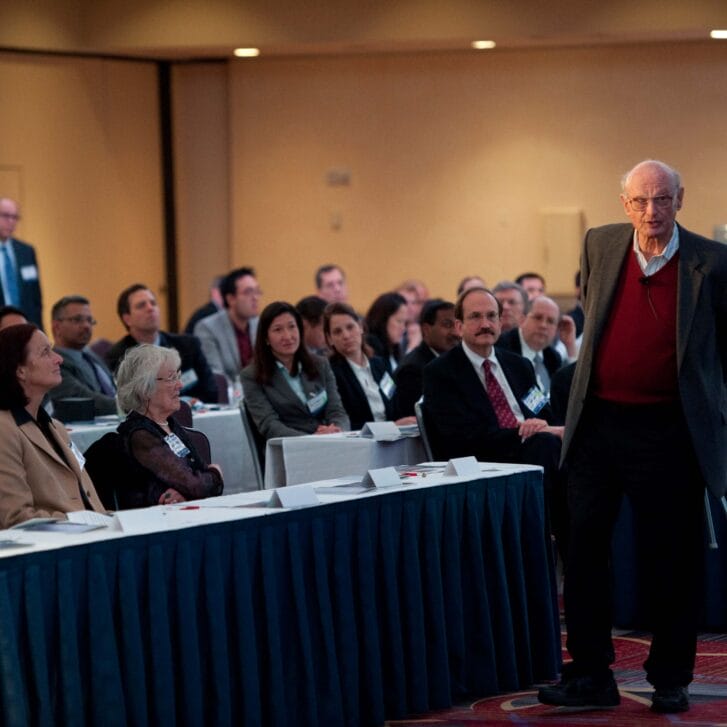The 2015 United Nations Conference on Climate Change in Paris was the biggest global event on climate change since the Copenhagen summit six years ago. Copenhagen was a disastrous failure with little meaningful action taken to reduce carbon emissions by the assembled nations. Will our climate be in better shape after Paris?
My answer is yes, but not because of the big global climate deal that was celebrated at Paris. The reality is that progress was happening anyway.
Here are three reasons for optimism regarding our ability to do something meaningful about climate change (beyond the obvious one that Western Europe is very serious about reducing carbon-based emissions).
1. In the U.S., the private sector is learning that reducing emissions is good business.
Many climate change activists think of the issue as a giant, collective-action problem. We all want others to reduce their emissions while we emit ourselves, knowing our own behavior is too small to make a difference. The dire result is that no one reduces emissions, and the problem just grows.
In America, it is clear that reducing the electricity and gas usage of commercial buildings (factories, warehouses and high rises) would take a big bite out of our carbon-based emissions because most electricity in this country is generated by coal and natural gas. That isn’t going to change, both because nuclear power is out of favor and because sources like solar and wind just cannot provide anything like the base load power generation.
While there is something to this collective action approach, there is another side to the emissions coin—energy efficiency. I benefit from increasing the efficiency of my energy usage, irrespective of what you do.
Companies can improve their bottom lines simply by increasing energy efficiency. For a long time, the problem was that big energy efficiency moves required big capital infusions up front (think a new modern factory). The costs have come down somewhat. At least as importantly, corporate America is sitting on a lot of cash it can invest.
So today it’s part reality, part prediction and part hope: energy efficiency will be a major part of the emissions reduction story in America.
2. In China, reducing emissions will be part and parcel to the next stage of its economic development.
There are at least three compelling reasons for China to get serious about its carbon-based emissions. First, China’s urban pollution problems are so bad they threaten not only the health of residents but also the longevity of the Chinese government as citizens become more vocal about improving their environmental quality of life. As an add-on, China has a double-whammy water problem: the north doesn’t have enough water, and water quality is an issue throughout the country.
Second, items like wind turbines and solar panels have become a big export industry for China at a time when lower-valued assembling and manufacturing is moving to poorer countries. China is also a big player in battery technology in everything from smart phones to electric cars. If the world wants lower emission power sources, China wants to be there to supply them.
Finally, China’s new normal of much slower growth, more services, less manufacturing and less construction is naturally very good news for the environment and the climate. Knowing this, some analysts criticize China for not doing more. But that doesn’t mean China isn’t going to do anything. As the world’s biggest carbon emitter, the next stage of Chinese development must be a win against pollution and for the climate.
3. While India didn’t cause the problem, the West will likely help India become part of the solution.
Indian Prime Minister Narendra Modi used the Paris platform to make a case that the West, not India, is responsible for the pollution problem and has been for the past 150 years since the Industrial Revolution. This message resonates deeply in all developing countries. The feeling is that they should not be denied the right to go through an energy-intensive phase of development of their own, as it is the best path to lifting billions out of poverty. But developing countries would welcome new technology and new capital to reduce emissions, so long as the West is willing to foot at least part of the bill.
Some countries—like Japan, increasingly China too—are serious about old-style development assistance to take on carbon emissions. But the bigger lift is likely to come from the private sector. Infrastructure of all sorts is essential to realizing the full potential of emerging markets. Much of the money and the technology will come from the private sector in the West. This is a perfect opportunity to make that infrastructure greener, cleaner and more efficient. That is in everyone’s interests.
I cut my teeth as a political scientist three decades ago looking at big international agreements to tackle global problems. Today, the prospects for such agreements in any area—let alone a diabolical one like the climate—are slim. But I have increasing faith in the power of the private sector to help with big social challenges, and none is bigger than climate. Not because the private sector has “gone soft,” but because big challenges create big opportunities for business.
When the world’s political leaders next get together for a summit on climate change, let’s hope they will have good news to report. I suspect they will, and that it won’t all be because of what the politicians do.
Editor’s note: The original version of this article appeared on LinkedIn on Dec. 8, 2015.

























